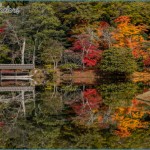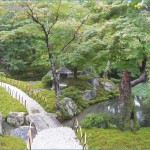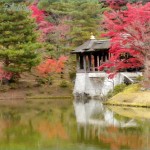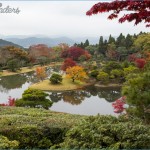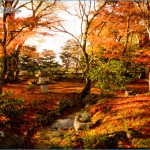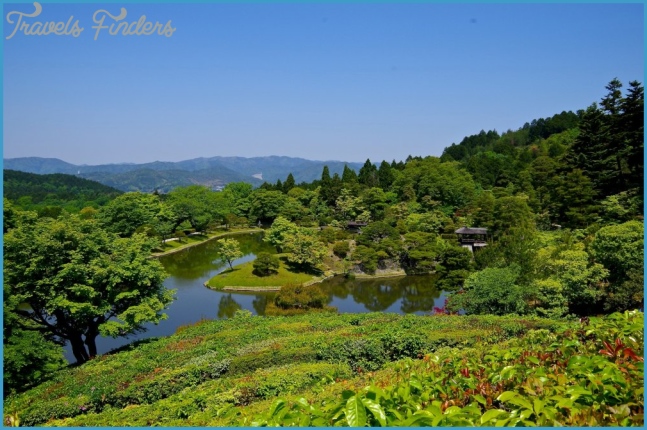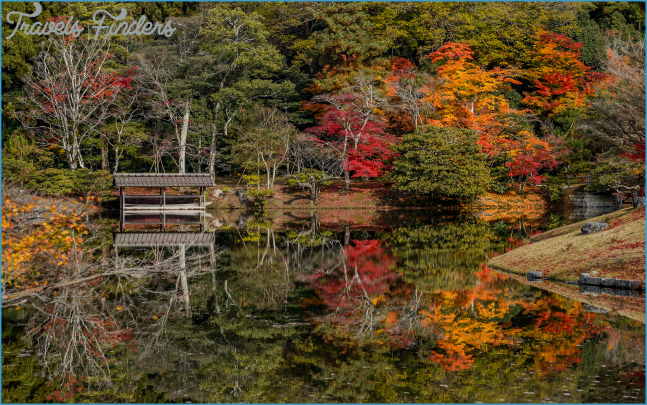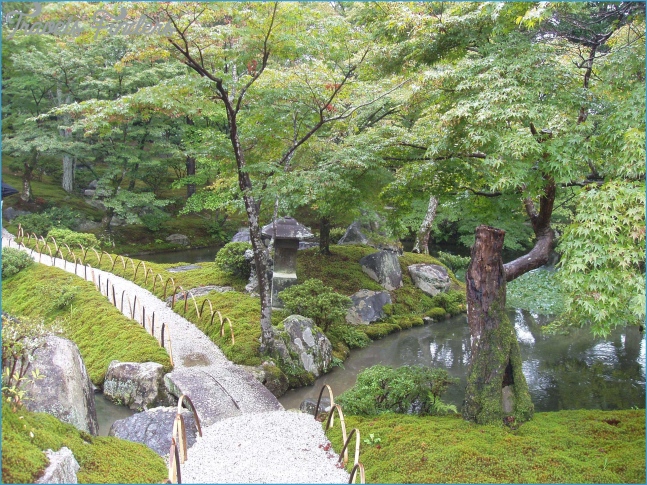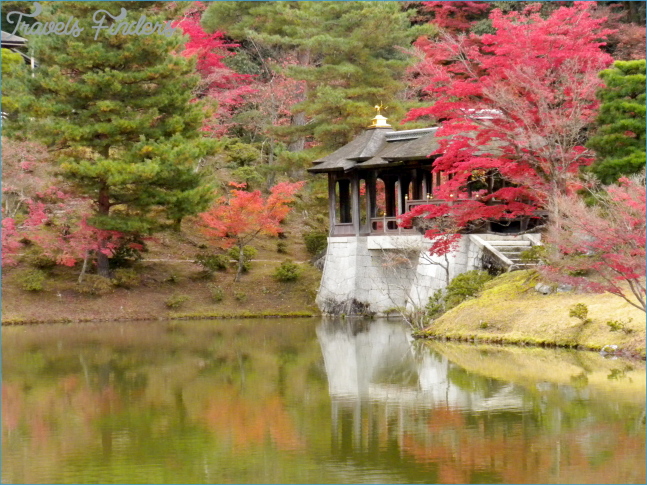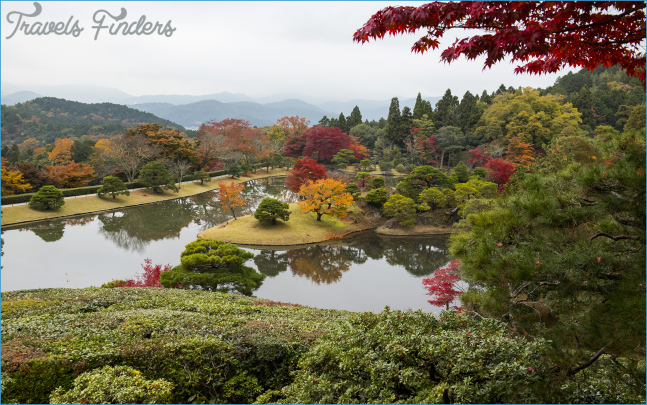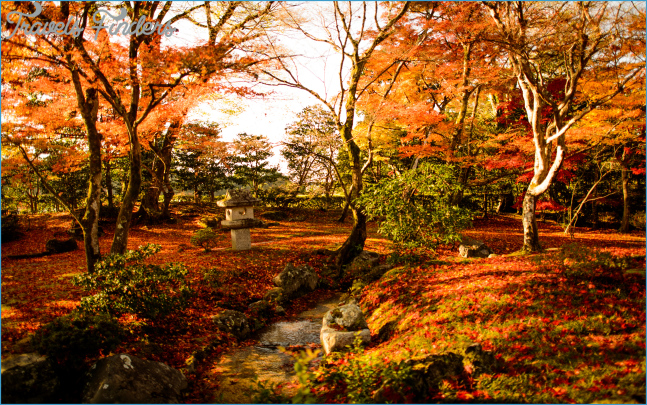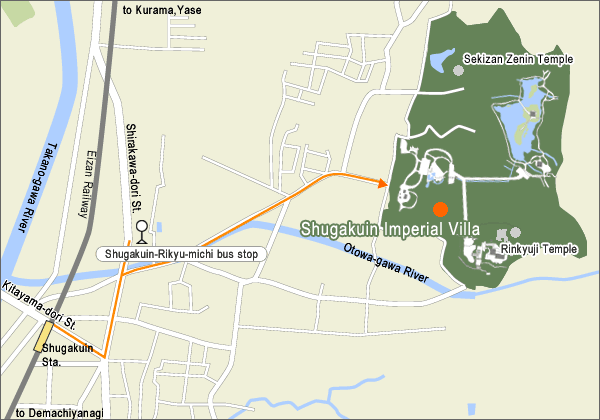The vast grounds of the Shugaku-in Imperial Villa cover more than 130 acres (53 ha) in the foothills of the Higashiyama Mountains in the remote northeastern area of Kyoto. Productive vegetable gardens and rice fields co-exist below the three levels of formal gardens and teahouse villas that climb up the hillsides. The Japanese gardening technique of shakkei, using “borrowed scenery” to supplement a garden’s backdrop, is evident in almost every direction at Shugaku-in, compositions continually emerging from the seemingly infinite arrangements that unfold while strolling and climbing along the artistic garden paths.
Shugaku-in Imperial Villa in Kyoto Photo Gallery
Shugaku-in was built as an imperial retreat between 1655 and 1659, at least in part to be far removed from shogunate political intrigue down in the central city districts of the capital. Gazing from a hilltop teahouse villa at Shugaku-in during a visit in the 1930s, the critical German architect Bruno Taut, the first Western eye to consider Japan’s traditional architecture from a modernist perspective, expounded: “Standing there in its clear beauty, this pavilion expressed such cleanliness and purity … the people in those ancient times must naturally have been animated by similar ideals.” Contemplating the Shugaku-in’s villas of refined elegance nestled so comfortably amidst the carefully shaped garden landscape can also calm the modern soul, a timeless meditation that is still relevant.
The shore of Yokuryuchi Pond reflects meticulous grooming.
A simple stone bridge and narrow walkway lead to the Jugetsukan teahouse.
A traditional wooden gate roofed with kawara ceramic tiles and sprinkled with autumn leaves.
A stone toro lantern and hillside steps below the Otaki Waterfalls.
The Kyusuitei teahouse above Yokuryuchi Pond.
Traditional tatami mat floors and shoji sliding partitions define the interior space of the
Rakushi-ken Villa.
Refined elegance and simplicity revealed by natural light inside the Kyusuitei tea pavilion.
A gardener in a conical rice straw hat whisks up fallen leaves.
Momiji maple leaves cover thick moss and a curving gravel path.


